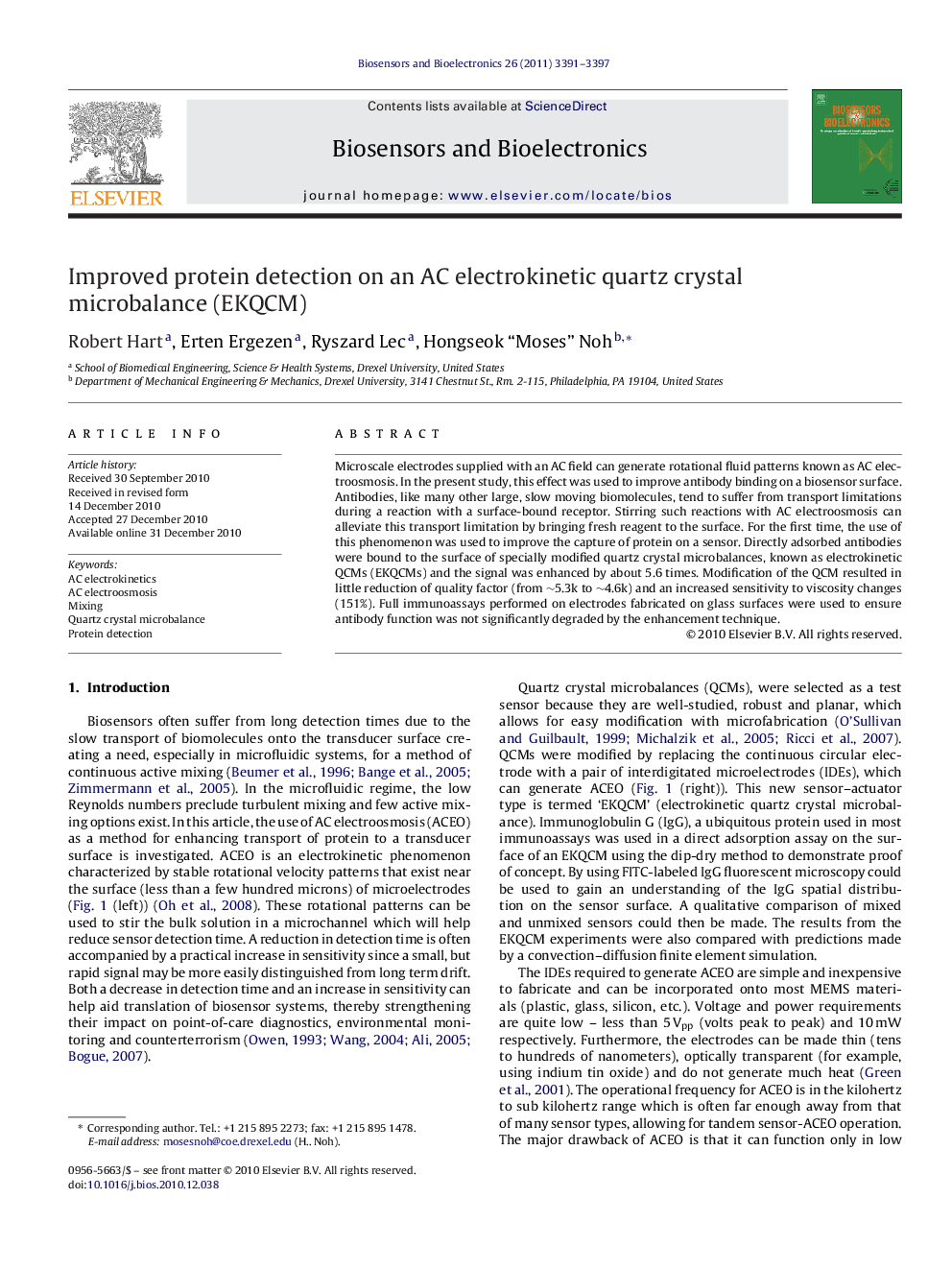| Article ID | Journal | Published Year | Pages | File Type |
|---|---|---|---|---|
| 867782 | Biosensors and Bioelectronics | 2011 | 7 Pages |
Microscale electrodes supplied with an AC field can generate rotational fluid patterns known as AC electroosmosis. In the present study, this effect was used to improve antibody binding on a biosensor surface. Antibodies, like many other large, slow moving biomolecules, tend to suffer from transport limitations during a reaction with a surface-bound receptor. Stirring such reactions with AC electroosmosis can alleviate this transport limitation by bringing fresh reagent to the surface. For the first time, the use of this phenomenon was used to improve the capture of protein on a sensor. Directly adsorbed antibodies were bound to the surface of specially modified quartz crystal microbalances, known as electrokinetic QCMs (EKQCMs) and the signal was enhanced by about 5.6 times. Modification of the QCM resulted in little reduction of quality factor (from ∼5.3k to ∼4.6k) and an increased sensitivity to viscosity changes (151%). Full immunoassays performed on electrodes fabricated on glass surfaces were used to ensure antibody function was not significantly degraded by the enhancement technique.
